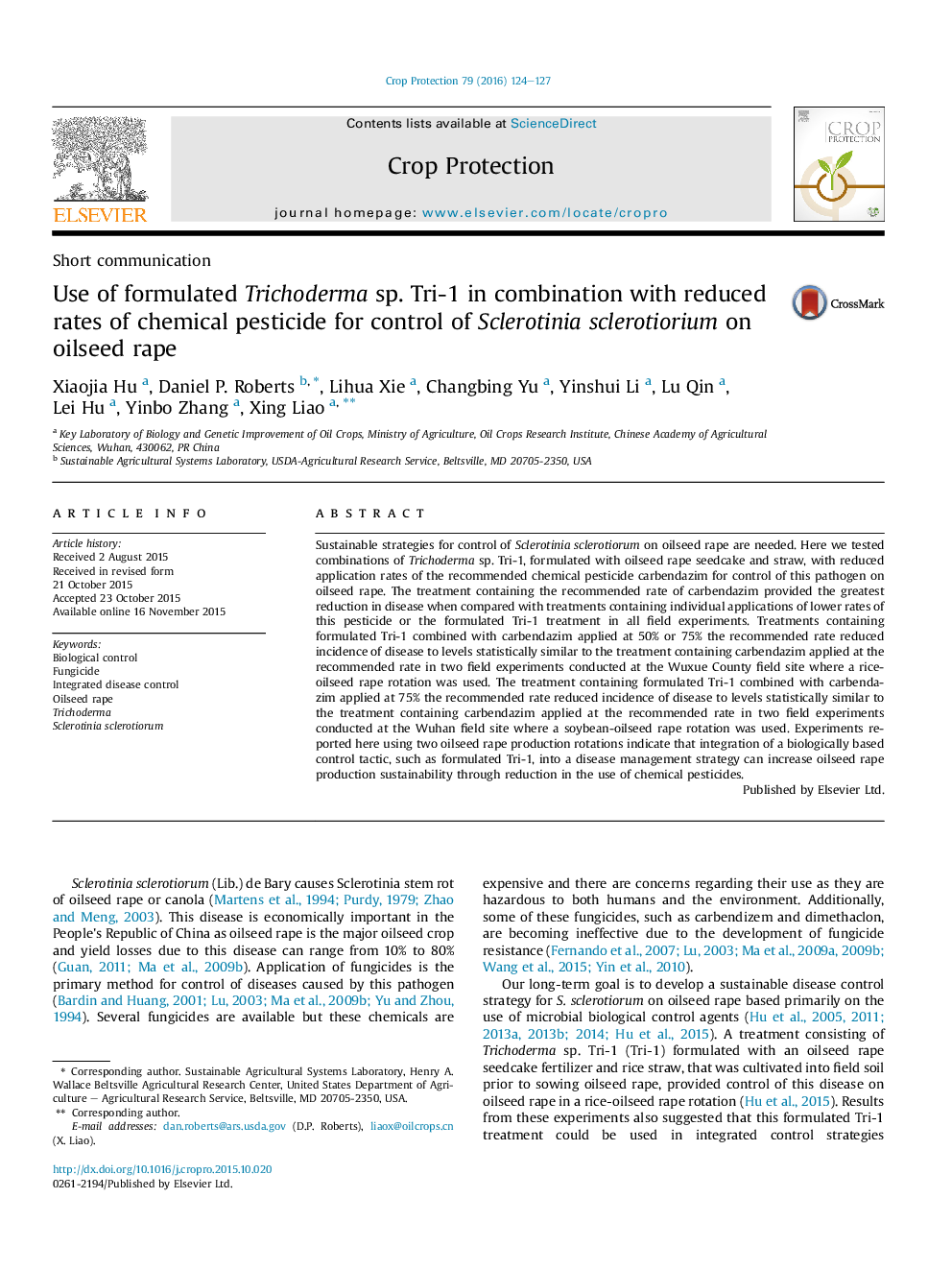| Article ID | Journal | Published Year | Pages | File Type |
|---|---|---|---|---|
| 4505621 | Crop Protection | 2016 | 4 Pages |
•Pesticide carbendazim and formulated Trichoderma sp. Tri-1 were compatible.•Formulated Tri-1 combined with lower rates of pesticide controlled disease.•Use of formulated Tri-1 may increase disease control sustainability.
Sustainable strategies for control of Sclerotinia sclerotiorum on oilseed rape are needed. Here we tested combinations of Trichoderma sp. Tri-1, formulated with oilseed rape seedcake and straw, with reduced application rates of the recommended chemical pesticide carbendazim for control of this pathogen on oilseed rape. The treatment containing the recommended rate of carbendazim provided the greatest reduction in disease when compared with treatments containing individual applications of lower rates of this pesticide or the formulated Tri-1 treatment in all field experiments. Treatments containing formulated Tri-1 combined with carbendazim applied at 50% or 75% the recommended rate reduced incidence of disease to levels statistically similar to the treatment containing carbendazim applied at the recommended rate in two field experiments conducted at the Wuxue County field site where a rice-oilseed rape rotation was used. The treatment containing formulated Tri-1 combined with carbendazim applied at 75% the recommended rate reduced incidence of disease to levels statistically similar to the treatment containing carbendazim applied at the recommended rate in two field experiments conducted at the Wuhan field site where a soybean-oilseed rape rotation was used. Experiments reported here using two oilseed rape production rotations indicate that integration of a biologically based control tactic, such as formulated Tri-1, into a disease management strategy can increase oilseed rape production sustainability through reduction in the use of chemical pesticides.
